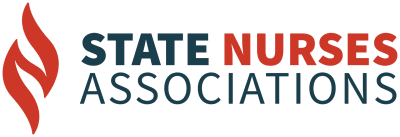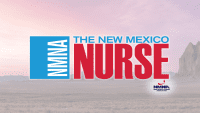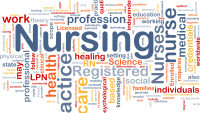Part 1: Understanding the audience.
In previous writings, it has been discussed how human influences are accelerating changes to our climate, causing it to break down (vs. “normal changes”), and has become one of the most pressing public health challenges of our time, and these impacts are only expected to worsen in the coming years. Addressing the issue of environmental breakdown requires a scientific and evidence-based understanding of this topic but also clear and convincing communication strategies. The importance of this issue on public health calls for effective messaging to bridge knowledge gaps between climate breakdown and how it directly impacts public health. By bridging these gaps and increasing understanding, nurses will be able to inspire action. Without it, the public and our patients may remain disengaged, policymakers lack the impetus for change, and businesses fail to prioritize sustainable practices. Effective communication translates complicated scientific data into concepts that are clearer, encouraging public awareness and understanding. Framing the issue with urgency while emphasizing solutions empowers individuals to participate in positive change. This topic can feel daunting and overwhelming. By highlighting success stories and positive visions for the future, it encourages feelings of strength and resiliency and fosters a sense of collective agency. Nurses are in front of the public every day, whether taking care of them in a healthcare setting or as members of the community. Through well-informed targeted messaging and the use of engaging tools, nurses’ communication can unite diverse groups. By tailoring communication to specific audiences, from patients to policymakers to everyday citizens, everyone feels equipped to make a difference. This collaborative approach is crucial for addressing challenges as vast and complex as environmental breakdown.
This multi-part series of writings begins with understanding the audience. Audiences differ based on demographics, knowledge levels, concerns, and preferred communication methods. From there, move on to the key messaging that will be communicated. Key messaging will discuss how to frame the issues, use science-based communication, and project a positive vision. After key messaging, communication tools and resources will be explored. The tools and resources will include varying methods for communicating with different audiences, using visual aids, social media, and developing talking points. The last two parts will focus on additional resources one can use to educate themselves and to assist others in broadening their understanding of the issues and solutions, and lastly, go into the need to continue the open dialog. This toolkit equips nurses with clear, concise, and effective communication strategies to discuss the challenges of environmental breakdown with their patients, leadership, and legislators. It will be a dynamic asset for anyone who wants to communicate effectively about the critical issue of environmental breakdown and will be updated and added to as needed.
Part 1: Understanding the Audience
Developing an understanding of the audience when communicating is essential for determining tailored and effective communication strategies on environmental breakdown. By understanding the demographics, knowledge levels, concerns, and preferred communication channels of different target groups, such as youth, policymakers, and businesses, nurses can deliver messages that resonate and drive meaningful action. The three main groups (all of which cover people in general) are youth, policymakers, and businesses. These groups are broken down and described in more detail below.
Part III. Building an Effective Environmental Advocacy Toolkit
Youth (18-25 years old):
- Demographics: Tech-savvy, environmentally conscious, and future-oriented.
- Knowledge Level: Varied, with some highly informed by social media and educational initiatives.
- Concerns: Climate anxiety, social justice issues intertwined with environmentalism, and lack of control over decision-making.
- Preferred Channels: Social media (Instagram, TikTok, YouTube), educational platforms, and youth-oriented news outlets.
For youth, it is crucial to recognize their digital-native tendencies and preferences for engaging content on social media platforms. This audience will vary in their demographics, including age, education level, and socioeconomic background. Additionally, recognizing their concern for the future of the planet and their desire for actionable information can guide messaging. By leveraging visually appealing content, storytelling, and interactive platforms, nurses can effectively engage youth in environmental issues and empower them to take meaningful action.
Policymakers (Local, State, and Federal levels):
- Demographics: Diverse, with a focus on public service and policy development.
- Knowledge Level: High, with access to scientific reports and expert briefings.
- Concerns: Economic feasibility of solutions, potential job losses in transitioning industries, and achieving social equity alongside environmental goals.
- Preferred Channels: Policy briefings, scientific reports, industry-specific publications, and conferences.
Policymakers represent a crucial audience whose decisions can significantly impact environmental policies and actions. When communicating with policymakers, one should acknowledge their diverse backgrounds, political affiliations, and constituent priorities. Effective communication with this group involves highlighting the economic and social benefits of environmental action, such as job creation, public health improvements, and resilience to climate breakdown. By providing evidence-based research, case studies, and policy recommendations, communicators can foster informed decision-making and advocate for ambitious environmental policies.
Businesses (CEOs, Sustainability Officers):
- Demographics: C-suite executives and sustainability managers motivated by profitability and market trends.
- Knowledge Level: Variable, with some businesses having dedicated sustainability teams, while others require more basic awareness.
- Concerns: Balancing environmental responsibility with shareholder value, staying competitive in an increasingly sustainability-conscious market, and the cost of implementing sustainable practices.
- Preferred Channels: Industry publications, webinars, sustainability conferences, and B2B social media (LinkedIn).
Businesses play a pivotal role in driving innovation and sustainability practices that can alleviate environmental breakdown. When communicating with businesses, nurses should consider their sector, size, and corporate values. Messaging to businesses should focus on highlighting opportunities for sustainability and innovation, such as cost savings, brand differentiation, and access to new markets. By highlighting successful examples of sustainable business practices and offering practical tools and resources, nurses can inspire businesses to integrate environmental considerations into their operations and supply chains.
Addressing potential anxieties and offering solutions for individual action is essential across all audience groups. Nurses should acknowledge the complexity and scale of environmental challenges while emphasizing the importance of individual contributions. By providing clear guidance on sustainable behaviors, such as reducing waste, conserving energy, and supporting eco-friendly products, nurses can empower individuals to make positive changes in their everyday lives. In crafting messaging for different targeted groups, it is essential to tailor the tone, language, and format to meet their specific needs and preferences. Whether through social media campaigns, targeted emails, multimedia content, or traditional news outlets, nurses must leverage the most effective communication channels to reach their intended audience. By prioritizing audience-centric communication strategies, we can foster greater awareness, engagement, and collective action to address environmental breakdown and build a more sustainable future.
























